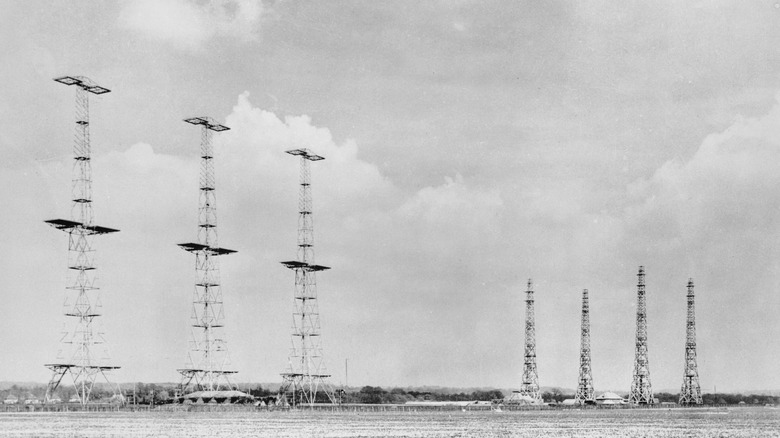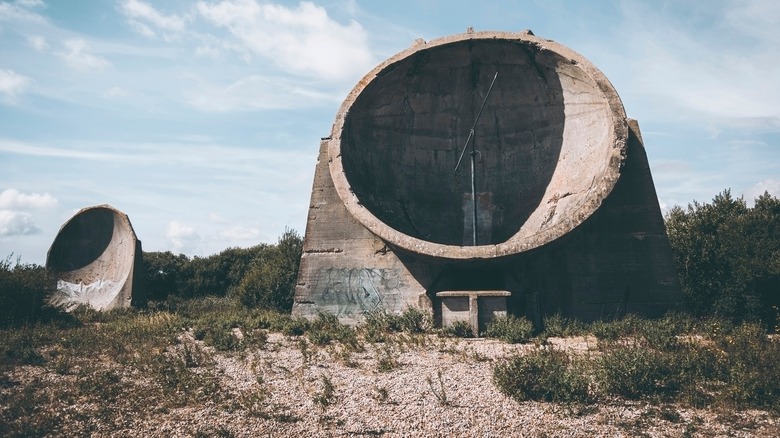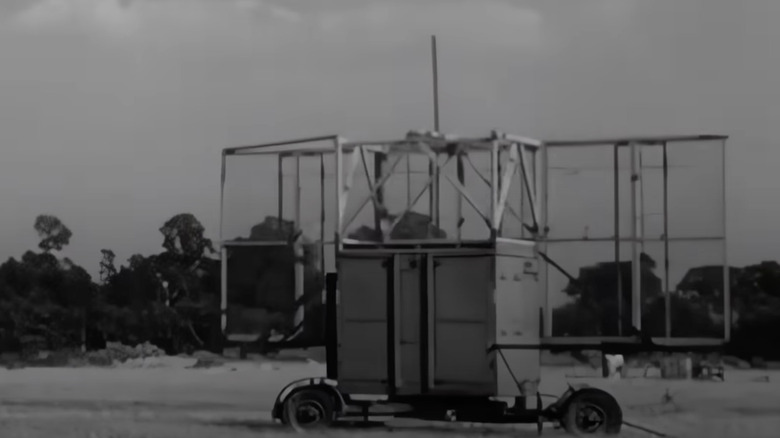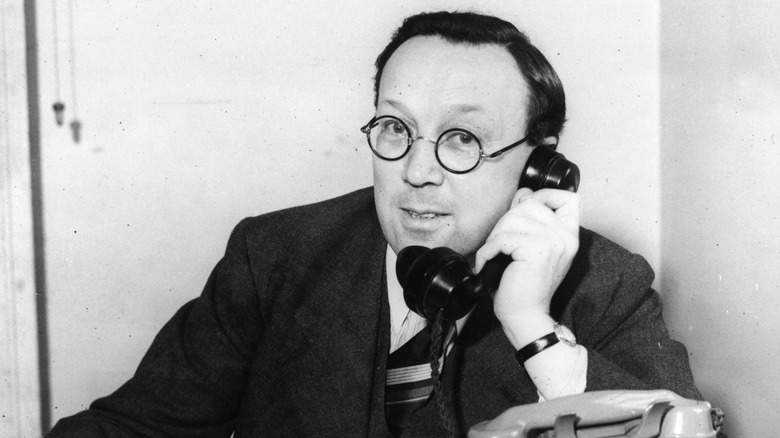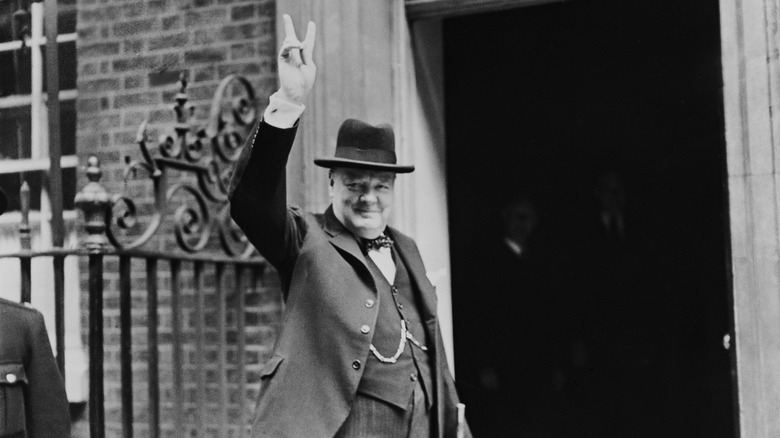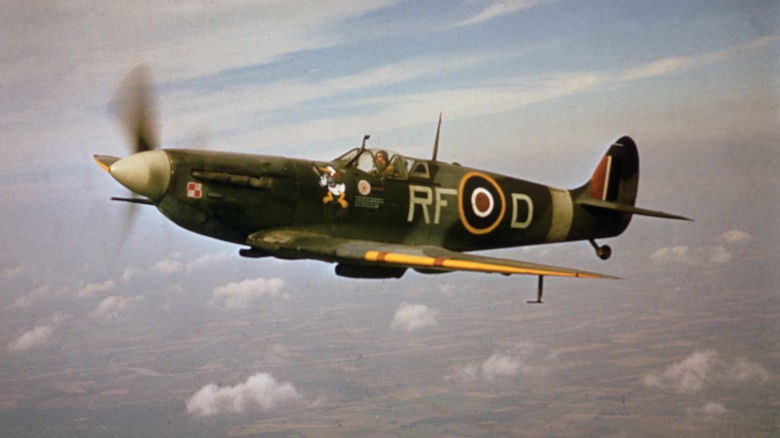How The Introduction Of Radar In WWII Changed The Course Of The War
Hitler's invasion of Poland in September 1939 did more than just start World War II. It became a literal testing ground for the most advanced weapons, technology, and tactics of the day. The combination of armor, infantry, and air power in a coordinated Blitzkrieg, which means "rapid attack" in German, soon overwhelmed Poland with others to follow. The German onslaught continued into France on May 10, 1940, pushing the defending British Expeditionary Force (BEF), French, and Belgian troops back to the port city of Dunkirk. Operation Dynamo would see the evacuation of more than 338,000 troops to the British Isles by June 4.
The escape of such a large component of the BEF infuriated Hitler, who had hoped for a knockout blow to Great Britain at Dunkirk. Looking to invade and finish the job, Hitler turned to Hermann Göring and the German air force, the Luftwaffe, to knock out the Royal Air Force (RAF) and pave the way. The Luftwaffe was the most state-of-the-art air force of its time, consisting of Ju 87 Stuka dive bombers, Bf 110 twine-engine fighters, and Messerschmitt Bf 109 fighters to name a few. They all would hammer Britain from July 10 to Oct. 31 in what would become known as the Battle of Britain. The British needed a miracle to survive, and they would find it in a new technology called RADAR, short for Radio Direction And Ranging.
[Featured image by RAF Official Photographer via Wikimedia Commons | Cropped and scaled | CC BY-SA 4.0]
Precursor to RADAR
RADAR did not suddenly spring to life in the summer of 1940. Its concepts and development began in 1886 when Heinrich Hertz discovered that metallic objects reflect radio waves. The work would be furthered in 1904 when German Christian Hülsmeyer conducted an experiment that allowed him to determine the distance of a metallic object from a radio wave transmitter. Christian would later build a device to measure the distance and time of an object, patenting the process in April 1904 and thus being credited as the inventor of RADAR.
Christian's RADAR concept would find a foothold in England as part of its air defense against Zeppelins during WWI. This early concept of RADAR would be a series of acoustic mirrors that were constructed along the English coast from the south to the northeast. These giant listening devices were constructed of concrete and allowed for specially trained listeners to detect sounds from the sky at great distances. They were essentially an early warning system for the British. These would be used until the 1930s when a Scottish physicist developed military use RADAR.
The Who and the What
The rise of bombers post-WWI meant for the British people that a new method of detection was needed to direct their aircraft to face incoming threats. No longer was the nation protected by its surrounding waters, and unless a new method was developed, any attack on Britain would result in abject destruction for them. Therefore a new defense was needed and the Committee for the Scientific Survey of Air Defense turned to the 42-year-old Robert Watson Watt to do just that. The Scotsman was aware of the work previously done by Hertz and that by the British Postal engineers and the disruption of their radio waves when planes passed by, which inspired Watson Watt to look into it further.
The Scottish physicist developed a working concept which he successfully tested on February 26, 1935, at Daventry. There were only three people present: Watson Watt, Arnold Wilkins (his colleague), and a member of the Air Ministry, who witnessed a Handley Page Heyford bomber flying at 6,000 feet be detected by signals from a BBC transmitter. The test proved that radio waves could be directed in such a way as to detect incoming aircraft as well as determine their range and timing, which would prove critical for the British to deploy their limited air power.
The Why and the How
In 1936, Watson Watt met with Winston Churchill at Chartwell in Kent. Churchill had been impressed by an earlier presentation from Watson Watt on the full potential of RADAR and wanted to know about the speed of development and construction of a network to protect Britain. Watson Watt relayed how the Air Ministry (who he worked for) had effectively been slow-walking the process, much to his chagrin. Churchill resolved the matter by reading Watson Watt's written recommendations to the important Air Defence Research Committee, who promptly implemented them all.
Radar towers were constructed all along the coast and throughout the country in the years leading up to WWII. Interestingly enough, the British Navy completely ignored the potential of RADAR and made no effort to outfit any of its ships with range-finding equipment or to utilize RADAR in any way to benefit them. Churchill would remark as to RADARs importance for Great Britain that "We are on the threshold of immense securities for our island."
The right tool at the right time
RADAR failed to be fully developed in the years before WWII due to budgetary constraints by Prime Minister Neville Chamberlain. Once war did break out in 1939 and Churchill returned to the Admiralty (and soon to be Prime Minister), he made it a priority for British naval vessels, especially those conducting anti-submarine operations, to be outfitted with range-directional finding technology. "Progress in every branch of RADAR was constant and unceasing during 1939, but even so the Battle of Britain from July to September 1940 was fought by eye and ear," wrote Winston Churchill.
The RADAR net that went up in Great Britain before the great air battle, was decidedly imperfect. Though five towers operated every minute of every day with dozens more in support throughout the coastline, the technology suffered from accuracy and direction issues. Not to mention the issue of the radar signature of the planes with both British and German planes looking the same. British engineers would solve this problem by installing dipoles on British planes that altered their electronic signature. The problems with the technology were resolved by British engineers one at a time, which along with the ingenuity of British pilots (who learned to adjust for altitude on the fly), provided the island nation with a real game changer.
A real game changer
By the time the Luftwaffe began the Battle of Britain, the British had erected 29 RADAR stations along the coastline, which gave them a 100-mile range. This warning gave them the needed time to launch some of the best fighters of the war, the Hawker Hurricane and Supermarine Spitfire to directionally locate and then intercept the German planes. Time was constantly a precious commodity as once detected, it took RAF planes about two minutes to get airborne and then another 15 minutes to fly to 20,000 feet to get into position. Every minute counted and RADAR made that possible.
The integration of RADAR with over 30,000 trained ground observers in over 1,000 positions throughout the country, gave the British a force multiplier in the Battle of Britain. The air war played out like a chess match, with the German air force marching in only to be countered by a judicious use of force at the right time. The air campaign would end by late October 1940 with the RAF losing 1,547 aircraft and Germans losing even more at 1,887. RADAR was a game changer for the RAF and the war, and one which allows the British people to celebrate September 15 as "Battle of Britain Day" every year.
